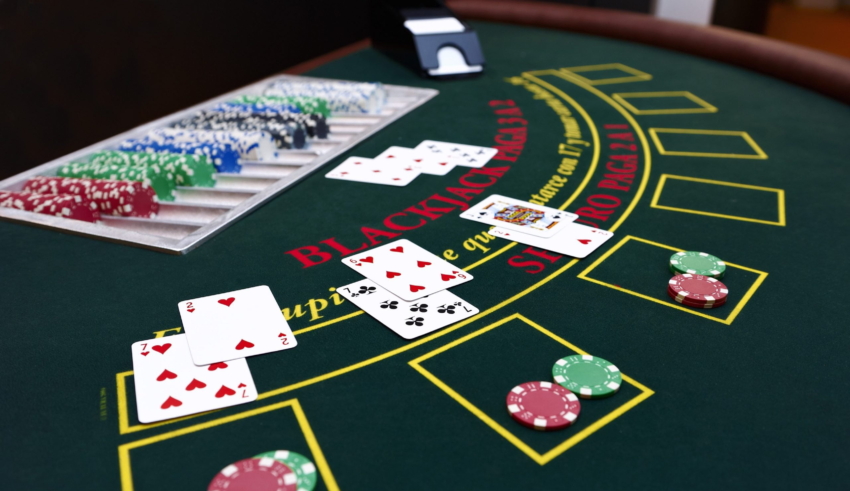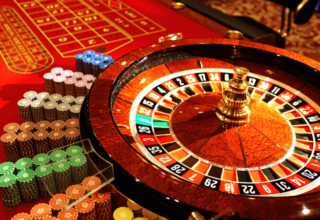
Mastering the art of card counting in blackjack can provide a strategic edge, transforming the game from chance to skill. This article delves into the intricacies of card counting, tracing its historical development and exploring modern techniques.
It critically assesses the legality and effectiveness of this strategy. Designed for the strategic player seeking autonomy, this piece provides a comprehensive analysis of card counting, empowering you to make informed decisions at the blackjack table.
Table of Contents
Understanding the Basics of Counting Cards
To gain a comprehensive understanding of how to count cards in blackjack, one must first familiarize themselves with the fundamental concepts and techniques involved in this strategy. The primary principle is to track the ratio of high to low-value cards remaining in the deck. This process, known as card counting, is a mathematical strategy that requires keen observation, precise calculation, and strategic implementation.
Notably, the Hi-Lo system is a commonly used technique. In this system, cards are assigned a value of -1, 0, or +1. High-value cards (10, J, Q, K, A) are assigned -1, mid-value cards (7, 8, 9) are assigned 0, and low-value cards (2-6) are assigned +1. The objective is to maintain a running count based on these values.
As the game progresses, a positive count indicates that a significant number of low-value cards have been dealt, leaving a deck rich in high-value cards. This situation tips the edge in favor of the player and is the opportune time to increase betting size. Conversely, a negative count implies a deck rich in low-value cards, suggesting caution and minimum bets.
This understanding of the basics paves the way for a more nuanced exploration of card counting strategies, ultimately leading to greater freedom and control over one’s blackjack outcomes.
The History and Evolution of Card Counting in Blackjack
Over the past six decades, the practice of card counting in blackjack has undergone significant changes and advancements, evolving into the sophisticated strategy known today.
It was in the early 1960s that Edward Thorp, a mathematics professor, first introduced the concept of card counting. Utilizing his knowledge in probability and statistics, Thorp devised the ‘Ten Count’ system that allowed players to gain a slight edge over the house.
However, this system was complex and required a great deal of concentration and mathematical prowess, limiting its accessibility. Recognizing this, Julian Braun, an IBM programmer, used high-speed computers to optimize Thorp’s system. This led to the development of simpler, more efficient card counting strategies that were more accessible to the average player.
In recent years, the advent of online gambling and the use of multiple decks in casinos have added new challenges to card counting. Yet, the core principle of tracking the ratio of high to low cards remains intact.
Despite attempts by casinos to deter card counting, it continues to be a viable strategy for those who understand its intricacies and are willing to put in the necessary time and effort.
Techniques and Strategies for Successful Card Counting
In the realm of card counting, the key to success lies in mastering a variety of techniques and strategies that provide an edge over the house. One of the most common methods is the Hi-Lo strategy, where each card is assigned a numerical value. Low cards (2-6) are valued as +1, mid-range cards (7-9) as 0, and high cards (10-Ace) as -1. This system aids in maintaining a ‘running count’, which fluctuates as cards are dealt.
An advanced strategy is the ‘true count’. It requires dividing the running count by the approximate number of decks remaining. This calculation provides a more accurate reflection of the card distribution, increasing betting accuracy and profit potential.
The key to successful card counting is not just knowing these strategies, but perfecting their implementation. This requires practice, patience, and stealth. It’s crucial to remain unnoticed by casino staff while maintaining an accurate count. Moreover, one must strategically adjust their bets with the rise and fall of the count. High counts indicate a surplus of high cards, favouring the player, thus warranting higher bets.
Evaluating the Legality of Counting Cards in Blackjack
Despite a widespread belief to the contrary, many jurisdictions, including a significant number of states within the USA, do not consider the practice of counting cards in blackjack to be illegal. The reason behind this lies in the strategic and analytical nature of the game.
Blackjack, in essence, is a game of strategy. Card counting is a skill that requires a keen sense of observation, sharp analytical skills, and a strategic mindset. As it stands, no federal law in the United States explicitly outlaws this practice. Instead, it is viewed as a player’s method of tipping the odds in their favor, much like any strategic move in a game of skill.
However, it’s critical to note that while the act itself may not be illegal, casinos hold the right to refuse service to anyone they suspect of card counting. This is a strategic move on their part to protect their interests. Essentially, while the freedom to count cards is legally protected, the freedom to play at any given casino is not. This delicate balance forms the core of the legality surrounding card counting in blackjack.
Implications and Results: The Effectiveness of Card Counting Strategy in Blackjack
A substantial number of studies have demonstrated that the card counting strategy can effectively tilt the odds in favor of the player in a game of blackjack. This analytical approach moves beyond mere chance, strategically leveraging knowledge of the deck’s composition to make informed betting decisions. The effectiveness of this strategy is contingent upon the player’s ability to quickly and accurately keep track of the ratio of high to low cards.
When successfully implemented, card counting has the potential to significantly improve a player’s chances of winning. While the house typically holds a 0.5% edge in blackjack, a proficient card counter can shift this advantage, gaining a 1% edge over the house. This strategic approach translates to more than just improved odds; it represents a potent declaration of player agency and a challenge to the preconceived casino advantage.
However, it is crucial to note that the effectiveness of card counting is diminished in games using multiple decks or implementing frequent shuffling. Despite these obstacles, the potential benefits of card counting underscore its enduring appeal to those seeking to tip the scales of fortune in their favor.
Conclusion
In conclusion, card counting in blackjack is a strategic method that can potentially enhance a player’s odds. While rooted in mathematical principles, its effectiveness is contingent on the player’s skills and discretion.
Despite its legality varying in different jurisdictions, it undeniably impacts the nature of blackjack. Hence, card counting remains a fascinating aspect of blackjack, intertwining the realms of probability, strategy, and legality.
Play live blackjack and a range of other Malaysia live casino games at WINBET2U Malaysia!














